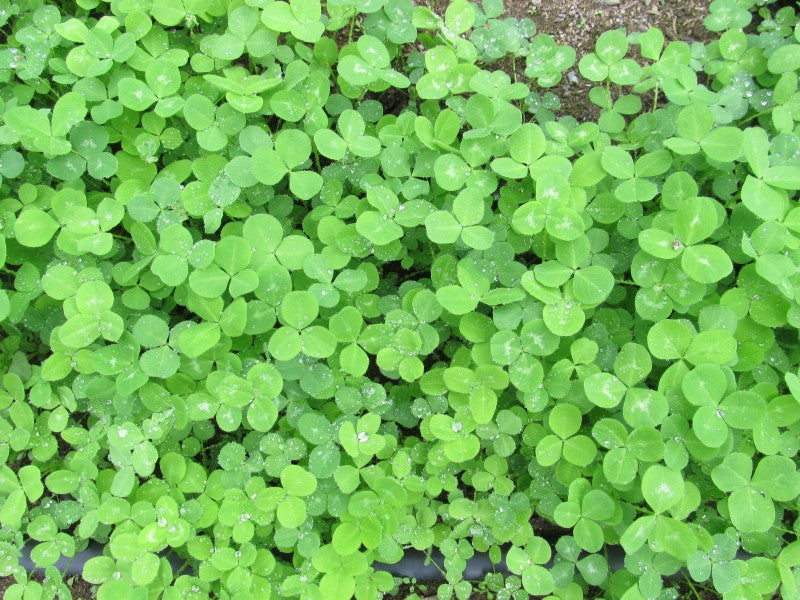Don’t just maintain soil - build it better. Read on to troubleshoot common soil-related issues...
 Building fertile, balanced soil is not just an essential task for growing a great garden year after year, but our responsibility - as land stewards - to greater environmental health. Healthy soils are the foundation of healthy ecosystems, helping purify water, prevent erosion and control invasive species. The measure of a healthy garden is well beyond the season’s harvest, but encompasses the impact we leave on the future generations of soil inhabitants.
Building fertile, balanced soil is not just an essential task for growing a great garden year after year, but our responsibility - as land stewards - to greater environmental health. Healthy soils are the foundation of healthy ecosystems, helping purify water, prevent erosion and control invasive species. The measure of a healthy garden is well beyond the season’s harvest, but encompasses the impact we leave on the future generations of soil inhabitants.
As we pull food from our garden, we pull all the nutrition that the plants hold in them from the soil as well. That's why it's important to give back to the garden and foster soil building practices. There are many good methods available for building soil health (crop rotation, organic fertilizers, mulches, cover crops), but before start using them on a seasonal schedule, the soil should be at a base level of balance. In poor soil conditions, or even in an unfamiliar growing space, it sometimes helps to work backwards: starting by diagnosing a problem, and addressing it first, before settling into a general soil health routine. Read on to troubleshoot common soil-related issues:
The solution: The substance primarily responsible for leafy (chlorophyll-led) growth is Nitrogen. If Nitrogen is lacking or stored in the soil in a form inaccessible to plants, leafy crops will struggle and may be stunted, weak, and more susceptible to pests and disease.
To help plants throughout the season, give them a small dose of slow released nitrogen in the form of Alfalfa Meal. Alfalfa Meal contains a good amount of nitrogen, but typically won't be too much as long as you follow the application guidelines. Kelp meal is another great amendment that contains many trace minerals that aid plants ability to uptake nutrients and thrive.
For the long term, try incorporating cover crops into your rotation cover crops rest the soil, and many fix nitrogen, which, along with regular feedings, will help keep enough available for your plants to thrive. Clover fixes nitrogen, while Peas unlock it into a form that plants can use. No matter how tiny your growing space, sowing cover crops will enrich your soil. Take a look at our blog posts HERE and HERE to learn how to grow fall cover crops in your garden.
The problem: Extreme weed growth.
The solution: Weeds carry a lot of information about land use history and soil health. A diversified and healthy weed population may mean the soil is fertile, while a takeover by one or two species might be mirroring a deficiency below the surface (researching the specific weed’s growing preferences may help deduce the status of your soil). In either case, a strong weed seed bank is tough for garden plants. To get the weedy population under control, use both weed suppressing practices and work to get your soil nutrients balanced.
Have soil test done in the fall or spring, and be sure to get one that comes with recommendations. Follow the recommendations for the types of amendments you should apply to balance your soil.
Cover crops grow quickly, can tolerate some drought, and aren’t finicky about soil quality - just like weeds - and so, can take over habitat once occupied by pesky weeds. Buckwheat battles against summer weeds, Peas and Oats are good for suppressing fall populations, and overwintered Winter Rye can help get spring weeds under control.
The problem: Soil quickly gets dusty or dries and crackles.
Humic Acids are an amazing soil building amendment. A form of ancient compost, they are what the organic matter you put into your soil turns into. Humic acids can be a great components to building and improving soils.
The solution: There might not be enough food in your containers to maintain plants through their life span. When was the last time you changed the soil in your containers? Just like in the garden, when you pull plants from your container you pull the nutrients those plants used from the soil as well. Start with fresh soil each season. In addition, for longer season crops like tomatoes, an extra boost is probably necessary to keep plant going strong, since the space in a container is limited. Add a small amount of a well-balanced fertilizer to keep plants happy. Take care to follow application rates, since containers are contained, it is easy to over do it and cause salt build ups in the soil.





